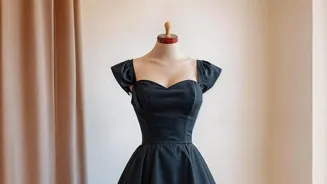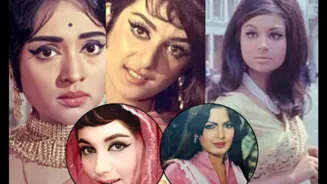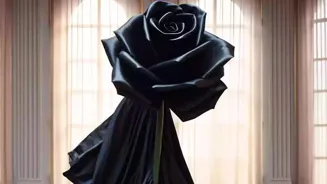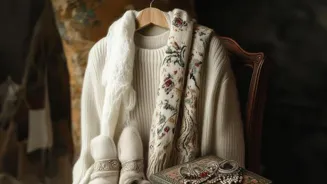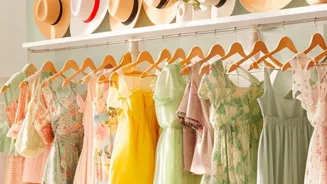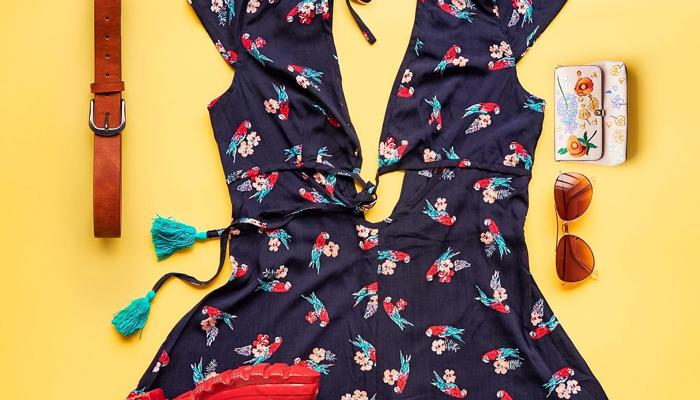Unlock the Secrets of the Little Black Dress: Dive into its Fascinating History & Impact on Fashion!
The Little Black Dress, or LBD as it's fondly called, is a staple in wardrobes across India and the world.
It's that trusty outfit you can grab for almost any occasion, be it a simple office meeting, a coffee date with friends, or even a semi-formal event.
But have you ever wondered about the story behind this fashion icon? It's more than just a dress; it’s a symbol of liberation, practicality, and timeless style. Let's dive into ten fascinating facts you probably didn’t know about the LBD.
Before Coco Chanel, black was for mourning
Before the 1920s, black clothing was primarily associated with mourning. If someone lost a relative or dear one, they would often wear black dresses to mark the period of sorrow. It wasn't seen as fashionable or appropriate for everyday wear.
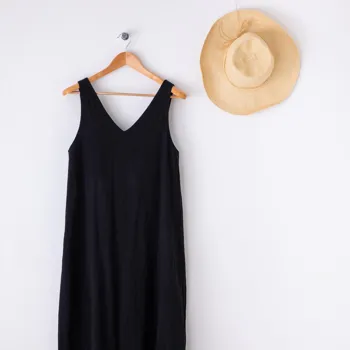
Wearing black otherwise was practically unheard of, considered almost morbid and certainly not chic. Can you imagine that? A colour considered so serious now being the base for one of the most loved outfits? It just goes to show how times, and fashion, can change!
Coco Chanel's Vogue moment
Coco Chanel, the French fashion designer, is often credited with popularizing the Little Black Dress. In 1926, her simple, elegant black dress design appeared in American Vogue.
The magazine famously declared it "the frock that all the world will wear," comparing its significance to the Ford automobile. This was revolutionary! Suddenly, a black dress was no longer about sadness but about accessibility, elegance, and modern style. It was a game-changer for women's fashion.
The "Ford" of fashion
Vogue wasn't kidding about that Ford comparison. The LBD was designed to be affordable and accessible to women of all social classes, much like Henry Ford's Model T car brought automobile ownership to the masses. Before, haute couture was a privilege of the wealthy.
Chanel brought a touch of elegance to the everyday woman at lower price point. This democratization of fashion made the LBD instantly popular and a symbol of a more egalitarian society.
The Great Depression and the LBD
Ironically, the Great Depression of the 1930s further solidified the LBD's place in fashion. Facing economic hardship, people sought practical and versatile clothing options. The LBD fit the bill perfectly.
It could be dressed up or down with accessories, worn for multiple occasions, and was relatively inexpensive to produce and purchase. It gave women a sense of style and sophistication without breaking the bank, making it a practical and stylish choice during tough times.
Hollywood's love affair
The LBD quickly became a favorite in Hollywood. Actresses like Audrey Hepburn, Marilyn Monroe, and Elizabeth Taylor were frequently seen sporting stylish black dresses both on and off-screen. Hepburn’s iconic Givenchy LBD in "Breakfast at Tiffany's" is perhaps the most recognizable example.
These appearances cemented the LBD's status as a glamorous and timeless piece, influencing women’s style choices worldwide and guaranteeing its place in fashion history.
A symbol of independence
The LBD, in many ways, represents a shift in societal norms and women’s independence. It was a departure from the elaborate, restrictive clothing of previous eras. It allowed women to express themselves with simplicity and confidence.
It was a statement that women could be stylish and sophisticated without conforming to traditional expectations.
Reinventing the LBD
Over the years, the LBD has been reinterpreted and redesigned by countless designers. While the core concept remains the same – a simple black dress – the variations are endless.
From different necklines and sleeve lengths to fabrics and embellishments, the LBD continues to evolve with fashion trends. It's a testament to its versatility and enduring appeal that it can be adapted to suit any style or occasion.
More than just black
Here's a little secret: The "Little Black Dress" doesn't always have to be strictly black! While the classic version is undoubtedly iconic, designers have experimented with different shades of deep hues like navy blue, charcoal grey, and even dark jewel tones.
The underlying principle is a simple, versatile dress that can be styled in countless ways, irrespective of the darker color being used.
The ultimate travel companion
Planning a trip? Don't forget your LBD! It's the perfect travel companion because it's compact, wrinkle-resistant (depending on the fabric), and can easily be dressed up or down for any occasion you might encounter on your journey.
Whether you're exploring a new city, attending a fancy dinner, or simply relaxing at a cafe, the LBD has you covered.
The LBD of the future: What does the future hold for the LBD? Given its staying power, it's safe to say that it will continue to be a fashion staple for years to come. With growing emphasis on sustainable fashion, we might see more LBDs made from eco-friendly materials. Digital advancements may bring us personalized LBDs designed via AI and even dresses that adapt to our climate and style preferences. No matter the evolution, the LBD’s core value, being a symbol of style, simplicity and self expression is sure to stay the same.
So, the next time you reach for your Little Black Dress, remember its fascinating history and the impact it's had on the fashion world. It's not just a dress; it's a statement, a symbol, and a timeless classic.
The LBD has truly become an expression of personal style and will always have a special place in the closet, and heart, of any fashion loving individual.
AI Generated Content. Glance/InMobi shall have no liability for the content